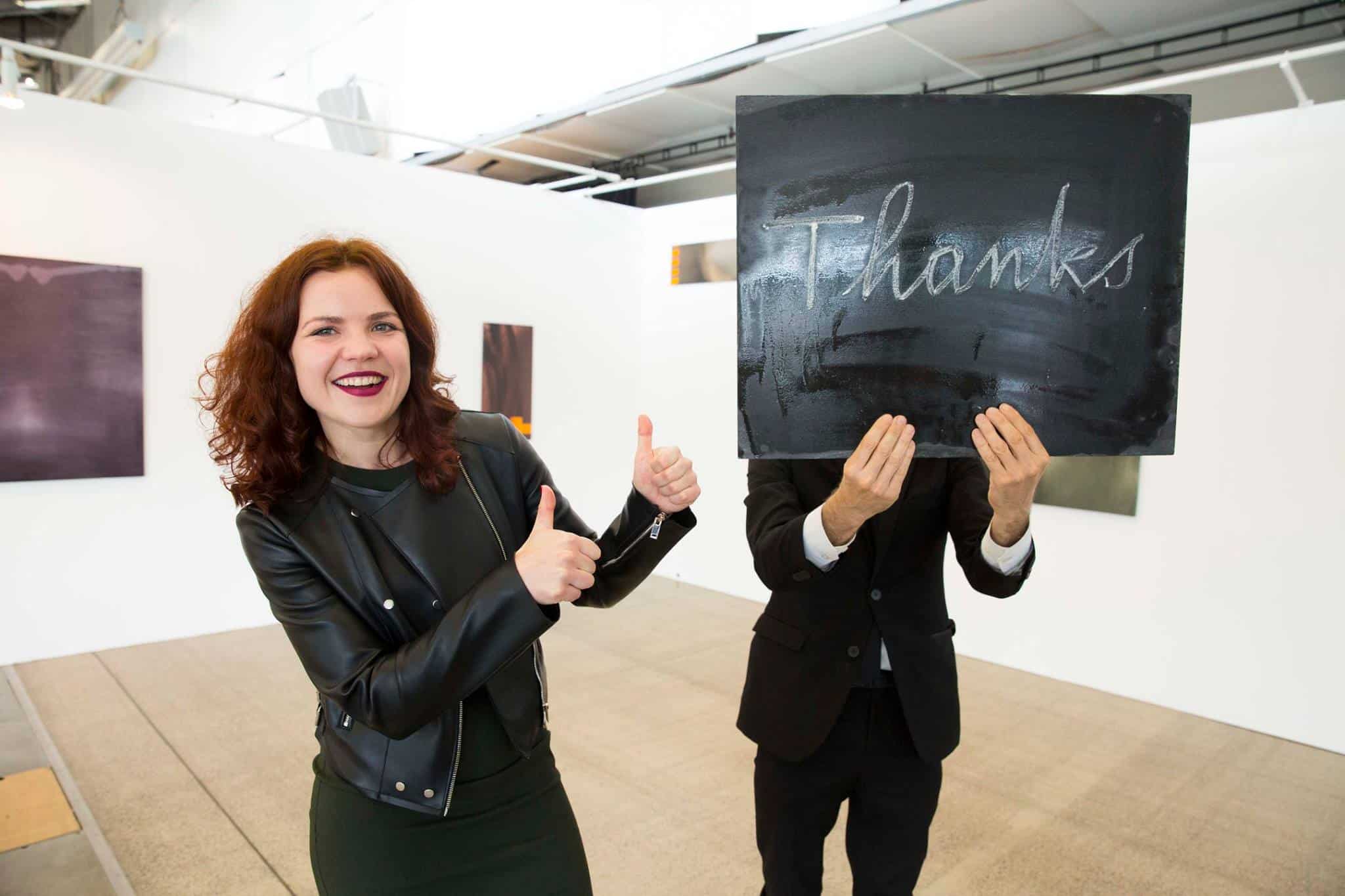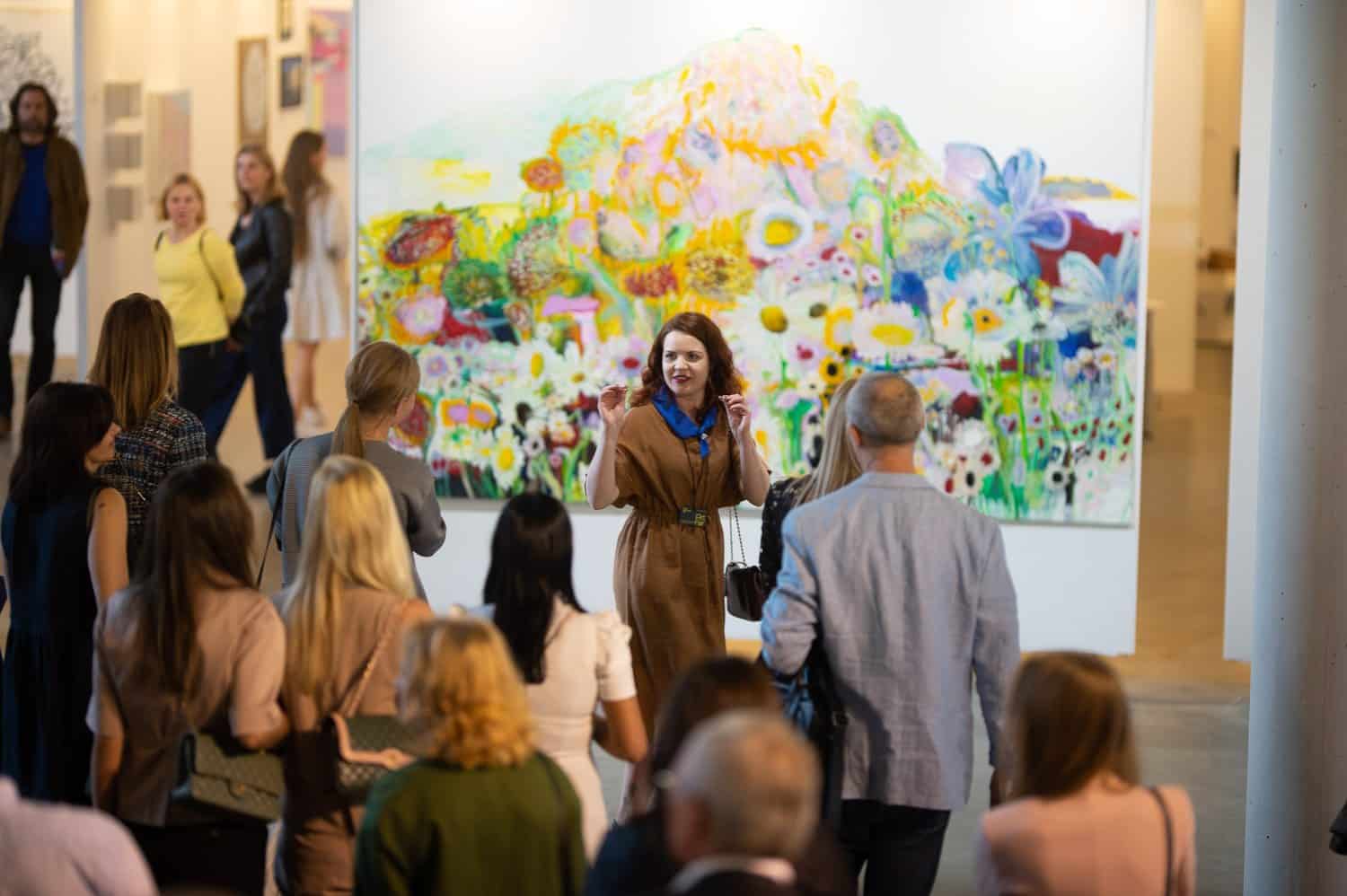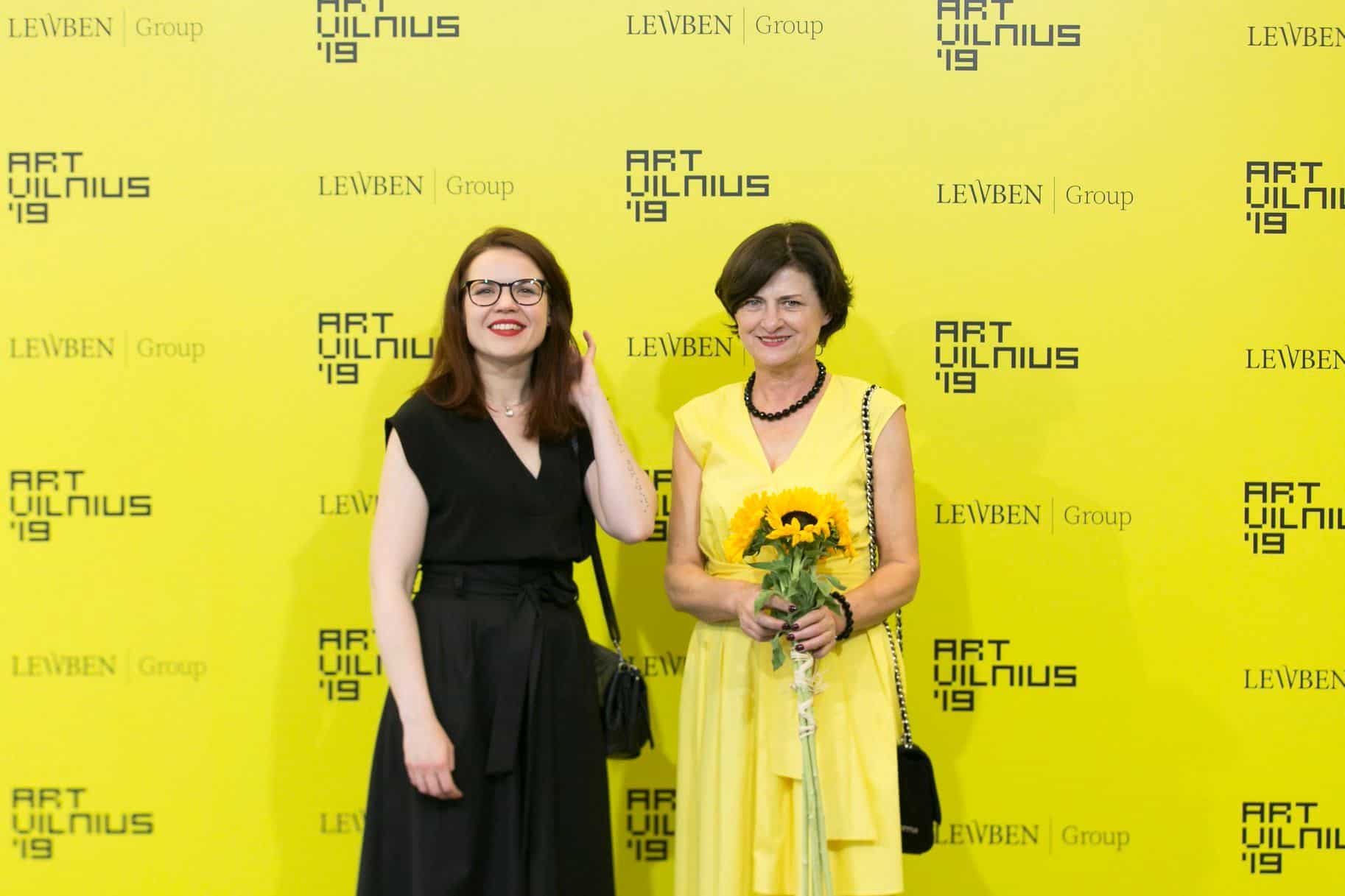The 11th international contemporary art fair ArtVilnius’20 is the largest visual arts event in the Eastern European region. Despite the cancellation of many similar events, the fair – although postponed twice, is now taking place between the 2nd and the 4th of October in Vilnius. We had the pleasure of speaking to the artistic director Sonata Baliuckaite about the challenges of organising ArtVilnius ‘20 during the pandemic, how the international experience of the team impacted the shape of the fair’s program and how the Lithuanian victory during the Venice Biennale has changed the perception of the Lithuanian contemporary art in the world.

ArtVilnius20 artistic director Sonata Baliuckaite in the Fair
Sylwia Krason: Art Vilnius is launching on 2 October, contrary to many other high-profile fairs which have been cancelled. What has been the most difficult task in organizing the fair in the current circumstances?
Sonata Baliuckaite: This year the organization of the art fair ArtVilnius’20 has been risky, but we’ve remained brave. The biggest challenge was to create the program, which was constantly changing. It feels as if we are organizing the fair for the third time now: the original date was scheduled for early June, then it was moved to the end of August, and then to October. Indeed, we had already confirmed and planned everything for the June fair, but after changing the dates, we had to re-plan everything and contact all of the participants, who couldn’t make up their minds so promptly either. Every countries’ quarantine requirements were also constantly changing, causing some foreign galleries to announce their participation only one month before the event. The main program of the fair was formed just a month before the opening date. By comparison, in the past, we used to have a formed and approved program at least six months in advance.
Observing the whole global pandemic situation, we are glad that our Baltic countries have been managing quite well, and we were able to invite the most famous Latvian artists. In addition, the Krakow Museum of Contemporary Art MOCAK will continue the tradition and present their collection. The event will also be attended by several famous Lithuanian artists, who make Lithuania famous in the world. In fact we had kept the option, if the fair could not be made international, to organize a high-quality and high-level event representing the Lithuanian contemporary art scene. But this did not happen – most guests from abroad are coming so our fair will be international and most of the planned program will take place.
SK: Does the fair have an online side to it, for those who would like to participate and buy art but for various reasons could not travel to Vilnius?
SB: As we watched some international art fairs completely move to online platforms as a result of the pandemic we, on the contrary, decided not to opt for this. We believe that art must be seen, bought, and experienced live. However, we have implemented a number of new digitization solutions. First, we decided against the printed catalog and created a new electronic version that will act as an electronic art platform. All ArtVilnius’20 participating galleries, projects, and artists will be presented in detail there; visitors will find descriptions of participants, works presented, their prices, etc. We will also do 3D tours and scan gallery stands with our partners. This way visitors who can’t come to the fair will be able to experience it virtually, and by going to our website and electronic catalog, they will be able to contact the galleries and even make arrangements to buy works of art seen in the 3D tour and in our e-catalog.
SK: I know that you’ve assembled a team with truly international experience to organize the fair. To what extent has their backgrounds impacted the shape of the fair’s program?
SB: True, not only does the ArtVilnius’20 team have a lot of international background but is also spread all over the world. Our communications manager Rasa currently lives between Morocco and Lithuania, having previously worked on art projects in Amsterdam. Architect Olga, with whom we have been working for four years, lives and teaches architecture in Sweden. Myself, I travel extensively to European contemporary art fairs and events. So, our team gets first-hand information about art events not only in Europe but also in Morocco. All in all, our whole team travels a lot, we always try to visit important European art fairs and together we learn from the best and observe global art trends. Knowing and participating in global art trends is especially important because about half of ArtVilnius participants come from abroad and participate in other fairs, so they have something to compare it to.
While traveling we also get acquainted with the technological achievements of fairs, new programs, etc., and we have successfully transferred this experience to the ArtVilnius’20 program.
It is also great that art fairs that were started later than ArtVilnius draw inspiration and learn from our event. We are proud to have inspired a number of fairs established after ArtVilnius. This includes the Kiyv Art Week in Ukraine, as well as the Tbilisi Art Fair in Georgia (canceled this year), founded by former ArtVilnius artistic director Eric Schlosser. We highly appreciate the ArtVilnius international program and every year we invite foreign curators who bring new inspiration and energy.
SK: The novelty of this year’s fair is the performance art scene. Could you elaborate more on this program?
SB: There will definitely be a lot of performances in ArtVilnius’20 – we have been actively injecting this genre into the fair program for many years, we are not afraid of noise because we have a large area with many different settings. ArtVilnius’20 performances will be presented by such famous Lithuanian artists as Augustas Serapinas, Evaldas Jansas, and audience-favorite Monika Dirsytė. Lewben Art Foundation will present the artist Dr. Gora Parasit’s show. So, we suggest visitors schedule their three-day ArtVilnius’20 program very carefully in order to be able to see everything. Some performances will not even be included in the program of the fair, so viewers will experience them unexpectedly.
The performance stage was planned as part of our annual exhibition of installations, sculptures, and performances, Takas (The Path) to offer audio and video equipment. However, when we started coordinating specific details, this idea had to be abandoned because a performance is not a theatrical play and the genre of the stage is not suitable for all artists. So now, during ArtVilnius’20, the performances will take place in the halls of the fair. The stage will still be there, just not for performances. This year we are continuing our successful cooperation with the National Opera and Ballet Theatre, which will present their mobile project, opera on the truck with La Serva Padrona, directed by Gediminas Šeduikis.
SK: This year, Art Vilnius’20 will have a strong focus on photography. Could you mention some photographers you have discovered, or have known but who have surprised you, in the course of preparing the fairs?
SB: Initially we wanted to make photography the main focus of ArtVilnius’20, but after changing the date of the art fair for the second time, we realized that this idea would have to be adjusted due to the reduced number of participants. So, there will be plenty of photography in both the project area and the gallery stands, but it will not be the main focus. New York-based Lithuanian artist Vytenis Jankūnas will participate in the ArtVilnius’20 project area with photographs, and I am also pleased with the photo exhibition of the famous Latvian artist Arnis Balčus, where he will present a retrospective with his best photographs from various series. Also, for several years now, photographs by Violeta Bubelytė, the first artist in Lithuania to direct the photo lens at the naked self, will appear in the program of the fair.
The collection of the Museum of Contemporary Art in Krakow MOCAK will also be dominated by photography, not to mention stars such as Natalia LL. My discovery this year was Małgorzata Markiewicz creating not only series of photographs but also textiles. My very favorite Lithuanian photographer Remigijus Treigys will also be presented, and I would also like to point out the young artists Vytautas Kumžas, a Lithuanian photographer living in the Netherlands, presented by The Rooster Gallery. I look forward to seeing the works of video artist Laura Sabaliauskaitė, chosen by the jury as the best young artist of ArtVilnius’19, who will present photographs, supplemented by video arrangement.
SK: Have you seen increased interest and maybe a different reception of Lithuanian art following the success of the powerful Pavilion at the Venice Biennale that presented the work titled Sun & Sea (Marina) by the work of theatre director Rugilė Barzdžiukaitė, playwright Vaiva Grainytė, and composer Lina Lapelytė?
SB: Yes, indeed, after the victory of the Lithuanian artists at the Venice Biennale, the name of Lithuania has become more recognizable in the art world. Now, when Lithuania is mentioned, everyone immediately remembers the Golden Lion of the Venice Biennale. I remember when I participated in an international conference in Düsseldorf just after the Lithuanian victory, everyone asked me wondering whether the performance genre was that popular and dominant in Lithuania. We had plans to present this show in some form during ArtVilnius’20, but due to the pandemic, these plans later had to be canceled.
I am proud and incredibly pleased that due to the victory in Venice, Lithuania has rung throughout the world precisely because of the achievements of art.
Contemporary Lynx Magazine is a proud media partner of ArtVilnius’20. Find our latest issue of printed magazine at our solo stand no S3 at the media zone section between 2-4 October 2020.















